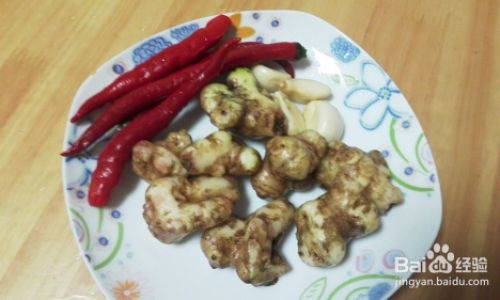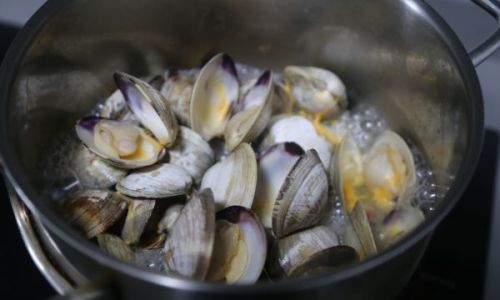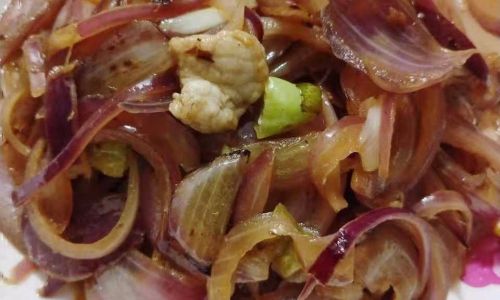Introduction
In the vast realm of culinary arts, the exploration of unique and underappreciated ingredients often leads to the discovery of delightful surprises. One such gem is the Jerusalem artichoke, a knobby, tuberous root vegetable that might not immediately catch the eye but certainly captivates the palate when prepared correctly. Also known as sunchoke, earth apple, or topinambur, this vegetable has been cherished for centuries for its nutritious value and versatility in the kitchen. Native to North America, it has found its way into European and Asian cuisines, where it is celebrated for its subtle sweetness, nutty flavor, and crisp texture. Among the myriad ways to cook Jerusalem artichokes, stir-frying stands out as a method that preserves their natural crispiness while infusing them with a rich, savory taste. This article delves into the intricacies of how to stir-fry Jerusalem artichokes, from selecting the perfect tubers to mastering the cooking technique, ensuring a delightful culinary experience every time.
Understanding Jerusalem Artichokes
Before diving into the stir-frying process, it’s crucial to understand the basics of Jerusalem artichokes. These tubers are a member of the sunflower family, which explains their unique appearance and nutritional profile. They are rich in inulin, a type of fiber that promotes digestive health, and contain essential vitamins and minerals such as vitamin C, potassium, and iron. Their low glycemic index makes them an excellent choice for those managing blood sugar levels. However, their high inulin content can cause gas in some individuals, so it’s advisable to consume them in moderation if you’re unfamiliar with the vegetable.

When selecting Jerusalem artichokes, look for firm, smooth tubers with no signs of softening, mold, or discoloration. The skin can vary in color from light brown to almost black, but the flesh should be white or pale yellow. Smaller tubers tend to be more tender and flavorful, making them ideal for stir-frying. Once purchased, store them in a cool, dark place with good ventilation to maintain freshness.
Preparing Jerusalem Artichokes for Stir-Frying
Before stir-frying, proper preparation is key to achieving the best results. Start by washing the tubers thoroughly under running water to remove any dirt or debris. Use a vegetable brush if necessary to scrub off stubborn soil. Once clean, you have a few options for peeling:
-
Peeling with a Knife: Use a sharp knife to carefully peel away the thin skin. This method allows you to retain more of the tuber, minimizing waste.
-
Peeling with a Vegetable Peeler: A vegetable peeler can be faster but may remove more of the flesh, especially if the tubers are irregularly shaped.
-
Leaving the Skin On: For a rustic, earthy flavor and added fiber, you can leave the skin on if it’s thin and free of blemishes. Just make sure to scrub it thoroughly.
Once peeled, cut the tubers into thin slices or matchsticks. The size and shape of the pieces will affect the cooking time, so aim for uniformity to ensure even cooking. Soak the cut pieces in water for about 15-20 minutes to remove excess starch, which can cause the tubers to become gluey during cooking. Drain well before proceeding.
Choosing the Right Ingredients and Tools
Stir-frying Jerusalem artichokes is a quick process that requires the right ingredients and tools to succeed. Here’s a breakdown of what you’ll need:
-
Oil: A high-smoking-point oil like peanut, grapeseed, or avocado oil is ideal. It can withstand the high temperatures of stir-frying without breaking down or smoking.
-
Aromatics: Garlic, ginger, and shallots or onions add depth and complexity to the dish. Fresh herbs like parsley, thyme, or rosemary can also be used for added flavor.

-
Seasonings: Salt, pepper, and a pinch of chili flakes or soy sauce can enhance the dish’s taste. For a gourmet touch, consider adding a splash of sesame oil or a sprinkle of toasted sesame seeds.
-
Wok or Large Skillet: A wok is traditional for stir-frying, but a large, heavy-bottomed skillet works well too. The key is to have enough surface area to cook the tubers in a single layer without overcrowding.
-
Spatula or Wooden Spoon: A heat-resistant spatula or wooden spoon is essential for tossing and stirring the ingredients evenly.
The Stir-Frying Technique
Now, let’s dive into the stir-frying process step-by-step:
-
Heat the Pan: Place your wok or skillet over high heat and add a generous amount of oil. Allow the oil to heat up until it shimmers but not to the point of smoking.
-
Aromatics: Add your chopped aromatics (garlic, ginger, shallots/onions) to the hot oil. Stir-fry for about 30 seconds to 1 minute until fragrant and slightly browned. Be careful not to burn them, as this will make the dish bitter.
-
Add Jerusalem Artichokes: Once the aromatics are fragrant, add the drained and patted-dry Jerusalem artichoke slices. Spread them out in a single layer to ensure even cooking. Stir-fry for about 2-3 minutes, allowing the pieces to sear and develop a golden-brown crust. This step locks in flavor and texture.
-
Seasoning: After the tubers have developed a nice color, sprinkle with salt and pepper. If using soy sauce or chili flakes, add them now and stir well to coat the tubers evenly.
-
High Heat and Quick Stirring: Maintain high heat and stir-fry continuously for another 3-5 minutes, until the tubers are tender-crisp and lightly caramelized. The constant stirring prevents burning and ensures even cooking.
-
Finishing Touches: If desired, add a splash of sesame oil or a sprinkle of toasted sesame seeds for added flavor and a nice finish. Fresh herbs can also be added at the end, just before removing the pan from heat, to retain their bright flavors.

-
Serve Immediately: Stir-fried Jerusalem artichokes are best enjoyed hot, as their crispiness and flavors diminish with time. Serve them as a side dish or incorporate them into a larger stir-fry with proteins and other vegetables.
Creative Variations and Pairings
Stir-fried Jerusalem artichokes are versatile and can be adapted to suit various tastes and cuisines. Here are a few creative variations and pairing suggestions:
-
Asian Fusion: Add soy sauce, rice vinegar, and a touch of honey for a sweet-and-savory glaze. Serve over steamed rice or noodles.
-
Mediterranean Twist: Incorporate olives, feta cheese, and a squeeze of lemon juice for a fresh, tangy flavor. Pair with grilled meats or fish.
-
Italian Inspiration: Use garlic, olive oil, and fresh basil, and serve with crusty bread and a simple tomato salad.
-
Vegetarian Main Dish: Stir-fry with tofu, bell peppers, and snap peas, and serve over a bed of quinoa or brown rice for a nutritious, balanced meal.
Conclusion
Stir-frying Jerusalem artichokes is a simple yet rewarding culinary endeavor that brings out the best in this underappreciated vegetable. By mastering the preparation, selecting the right ingredients, and employing the proper technique, you can transform these humble tubers into a delightful and satisfying dish. Whether enjoyed as a side or featured in a more complex meal, stir-fried Jerusalem artichokes offer a unique blend of flavors and textures that are sure to delight your taste buds. So, the next time you’re at the market, consider picking up a bag of these knobby wonders and embark on a culinary journey that promises both nourishment and delight. Happy stir-frying!






0 comments